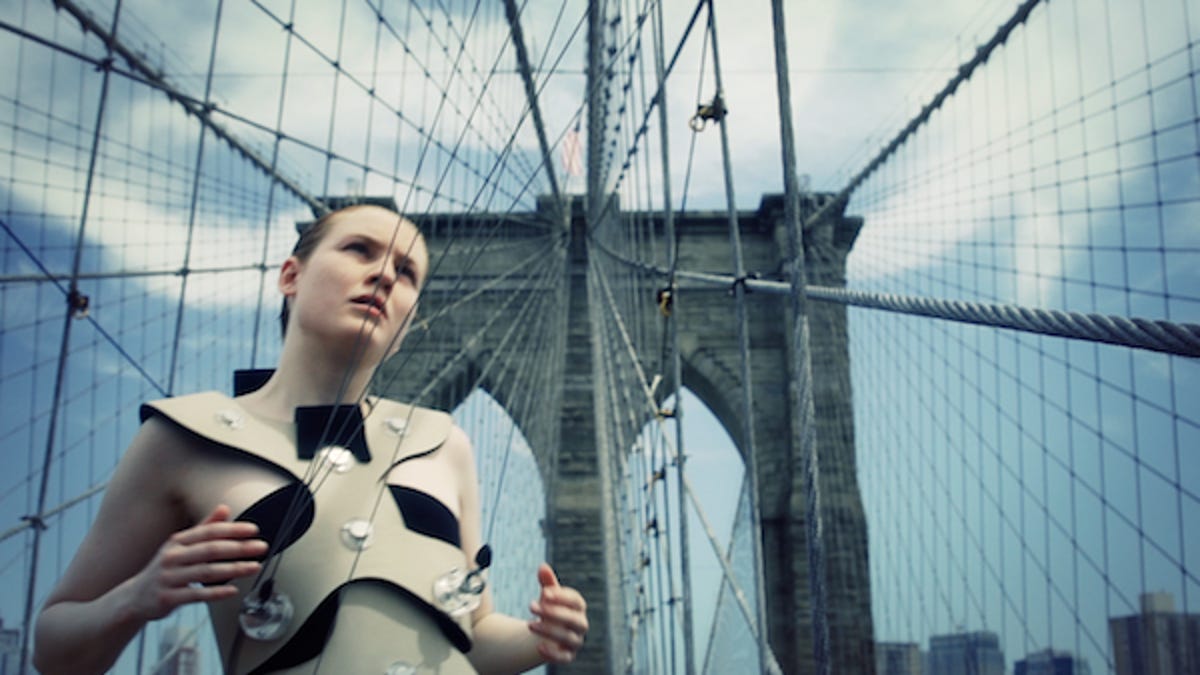Artist turns suspension bridge into 'human harp'
With a vest that combines digital and mechanical technology, artist Di Mainstone creates music from the cables that support suspension bridges.

(Credit: Di Mainstone)
With a vest that combines digital and mechanical technology, artist Di Mainstone creates music from the cables that support suspension bridges.
Pluck a taut string and it will sound a note — a principle that humans have been using to build musical instruments for millennia. The suspension bridge is rather younger, dating from around the early 19th century. But when artist Di Mainstone — artist in residence at Queen Mary University of London — looked at the strong, thick cables holding the Brooklyn Bridge in place, it put her in mind, not of engineering, but of harps.
"I started thinking about the cables of the bridge, which carry vibrations down them in the same way as a harp string," she said. "I wondered if there was a way to develop a parasitic interface that would enable people to 'play' the frequencies of the bridge, which is this beautiful deep groaning sound."
What she has created is called Human Harp — a vest that tethers a human "player" to a series of eight modules magnetically clipped onto a structure. Each module houses a retractable string, which attaches to the vest; sensors in the module can measure how many centimetres of string have been extended, the strength at which the string is pulled and the angle of the string.
This information is then sent to a software program in real-time, and processed through a synthesiser to create a note and effect — a variation on the module's pre-recorded note, which Mainstone created from an actual bridge sound. This, in turn, is processed through Ableton Live, which records the note from each module individually. In this way, the human player becomes a parasitic instrument, dancing with the sounds of the bridge, and using the sounds of the bridge, to create a unique piece of music.
And, to take it a step farther, Mainstone plans to tour the Human Harp around the UK and then the world.
"I... realised that the very process of pitching the Human Harp project had already created a bridge between Queen Mary University of London and the city of New York," she said. "This symbolic bridge is a two-way connection, with data being given and received on either side of the Atlantic, to enrich the concept and enhance the likelihood of the project coming to fruition."
You can read more about the project on the Human Harp website.
Via www.dezeen.com

